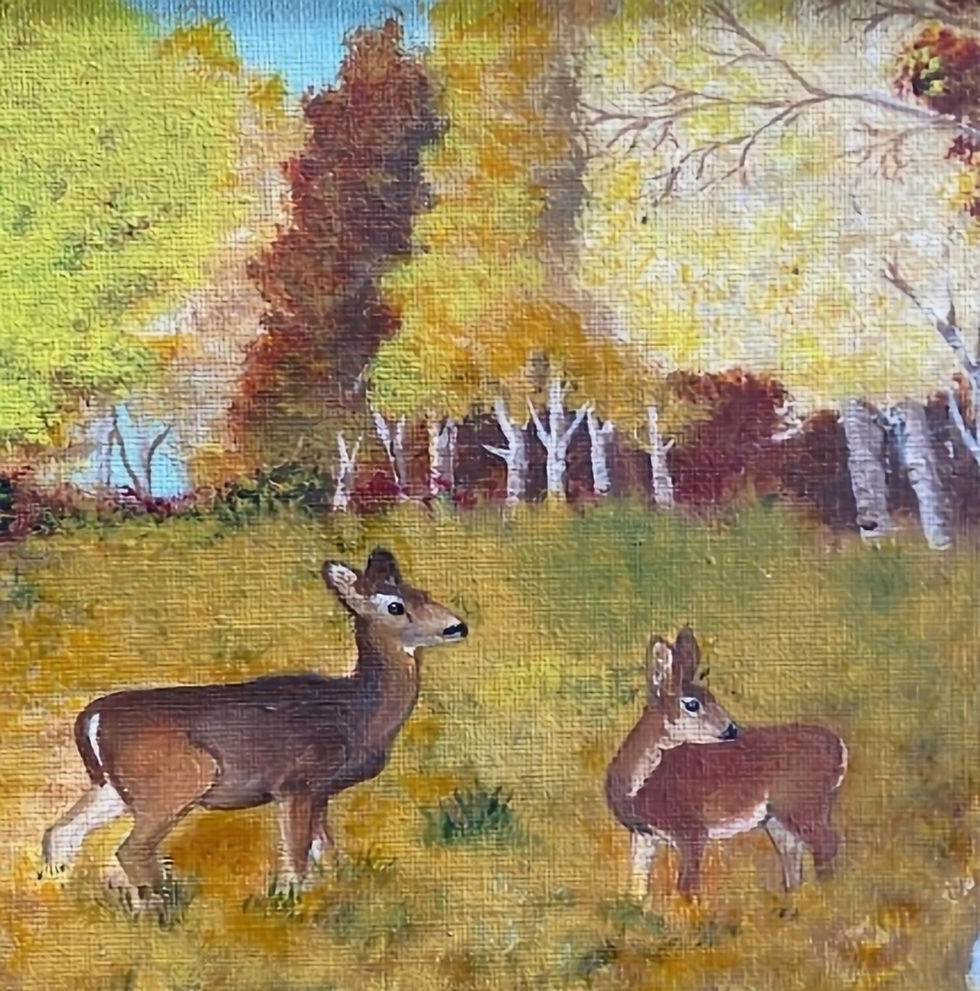Healing Habitat
- darcygrahek

- Oct 23, 2023
- 2 min read

Pollinators are just the best thing! Fun to see and adding a whole extra element of diversity to our gardens or naturescapes. Always one flower seems to be the favorite with them, whether bee, butterfly or hummer. What IS that flower and can we bring it home to our own garden? Often the flowers are native species and the value to the pollinator goes way up in that case. Those flowers offer more of something that the bees or birds need. Those plant species will make habitat whether we are there to water, groom, prune or defend them from everything, be it deer or kids on go-karts.
As we head into Fall, feeling the light shift, we know that soon it will be next Spring before we see most of the pollinators again. If you can spare a little room in your yard, even 100 square feet, you can make habitat that helps to pollinators thrive or even supports them through the dormant seasons. Planting a patch for pollinators involves setting up a native plant area with a diversity of blooms over a long season that feeds them with nectar, pollen and fruit. Go one-step further beyond feeding them and leave an untidy space with leaf litter or longer grass that promotes living space, a lot like the edge of the woods. About 80% of our gentle bee pollinators live underground.
At the Pollinator garden at US Fish & Wildlife, Bandon Marsh offices, our group of volunteers installed a garden of purely native species flowering plants, specifically for attracting pollinators. The best way to see a variety of pollinators is to plant a diversity of flowers. This garden features a flowering hedgerow, a sandy raised bed built from driftwood, and various large groups of perennials. Annual seeds are scattered to fill in where they will. There is a permanent small brush pile that sets inconspicuously behind some wide shrubs. The perimeter is circled by a border of concrete pavers, set on edge to a depth of 8 inches, weed-eater proof. Grass or weed rhizomes are unable to traverse that underground wall, lessening our maintenance. We leave seed heads for winter birds to eat and add branch cuttings or trimmings to the brush pile. Weed are composted off-site. No one waters over the summer, these flowers evolved here and adapted very well to our dry summers and wet winters.
The bloom starts in March with the huckleberry and then a long sequence of blooms takes us all the way into November with the asters. The healing comes when you are able to watch that bee find its flower, the one that was made just the right size for the tiniest of bees or just the right shape for the buzz pollination of the Bumblebee. You know then that you are watching something so ancient and profound that it can easily, and simultaneously, both overwhelm and calm your mind. And you might realize the enormity of the task that lies ahead of us if we are to preserve what little habitat is left for the pollinators.




How to Please Her: A Guide to Girls Licking. Want to know how to lick your girl out really good? This guide breaks down step-by-step techniques, focusing on consent, confidence, and connection—making girls licking both passionate and pleasurable.
Contribute Relationship Advice on CupidBaba
CupidBaba welcomes guest posts focused on relationships, intimacy, and adult lifestyle. Share your experiences, expert tips, or heartfelt advice with a community eager to explore love, sex, and connection in all its forms.
Ücretsiz Rastgele Görüntülü Sohbet Kameralı Sohbet Gabile Sohbet Canlı Sohbet Cinsel Sohbet Uygulaması.https://www.gevezeyeri.com/cinselsohbet.html
Ücretsiz Rastgele Chat Görüntülü Chat Kameralı Chat Gabile Chat Canlı Chat Cinsel Chat Uygulaması.https://www.gevezeyeri.com/gabilesohbet.html
https://indianwomenorg.com/read-blog/19053
https://sparktv.net/read-blog/53482
https://together-19.com/read-blog/70834
https://ourfamilylync.com/read-blog/25102
https://deutschekleidung.com/read-blog/16604
https://suomennbaseura.com/read-blog/10361
https://firstamendment.tv/read-blog/61542
https://divisionmidway.org/jobs/author/sohbetuygulamasi/
http://www.mizmiz.de/read-blog/54768
https://mylinks.ai/sohbetoadalari
https://www.pinterest.co.kr/chatodalari0357/
https://www.pinterest.co.uk/mobilsohbetodalari/
https://mx.pinterest.com/sevyelisohbet/
https://www.pinterest.de/sohbetsohbet0719/
https://www.pinterest.fr/chatsohbet0342/
https://www.pinterest.cl/ucretsizsohbet/
https://at.pinterest.com/istanbulsohbet/
https://taplink.cc/sohbetodalari
https://os.mbed.com/users/mobilsohbet/
https://eternagame.org/players/408511
https://www.ted.com/profiles/45248260
https://linkpop.com/canlisohbet
https://onne.link/sohbetodalari
https://teletype.in/@sohbetedin/sohbet
https://joy.link/sohbetedin
https://linkpop.com/canlisohbet
https://www.iglinks.io/sohbet-qgd?preview=true
https://flow.page/sohbetodalari
https://tr.linkedin.com/today/author/gevezeyeri?trk=article-ssr-frontend-pulse_more-articles
http://opensource.platon.sk/forum/projects/viewtopic.php?t=10945435
http://opensource.platon.sk/forum/projects/viewtopic.php?t=10945437